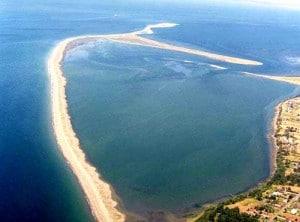Feeder bluffs are a defining component of our Salish Sea. CWI has been working for decades to understand, protect, and restore these beautiful foundations of our region. While more information can be found in our 2015 blog http://www.coastalwatershedinstitute.org/blog/?p=169, here are a few key elements: Feeder bluffs are 150-300 foot tall coastal cliffs left behind when the glaciers retreated from of our region 15,000 years ago; Feeder bluffs are an uncohesive mix of sand, rock and clays that naturally erode as a result of wind, rain and waves; providing the sand and gravel that forms many of the beaches in our region.
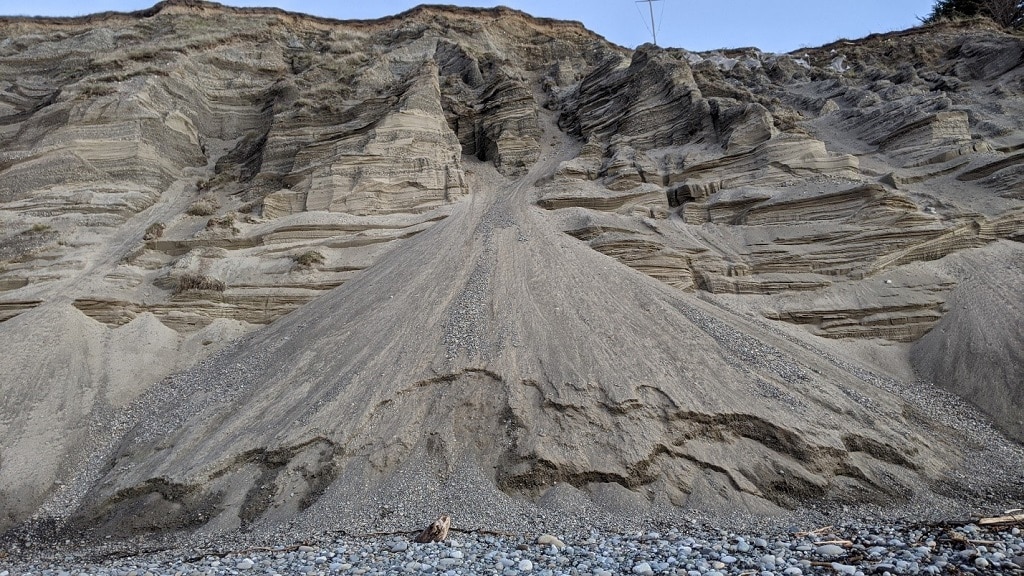
The Dungeness feeder bluffs, which provide the sediment that creates and sustains Dungeness Spit, a critical National Wildlife Refuge in Clallam County, are one of the most rapidly eroding feeder bluff shorelines in the region. Erosion is highly variable and while the long term average annual landward shoreline retreat rate is ~1.5 feet per year (Parks et al 2015), the erosion rates along the Dungeness feeder bluffs may be as much as 20 feet in a single event. The scale of beach-building material delivered to the nearshore by the natural erosion of the Dungeness Feeder bluffs provides regionally significant spawning areas for forage fish which are the base of the marine food web for birds, salmon and killer whales.
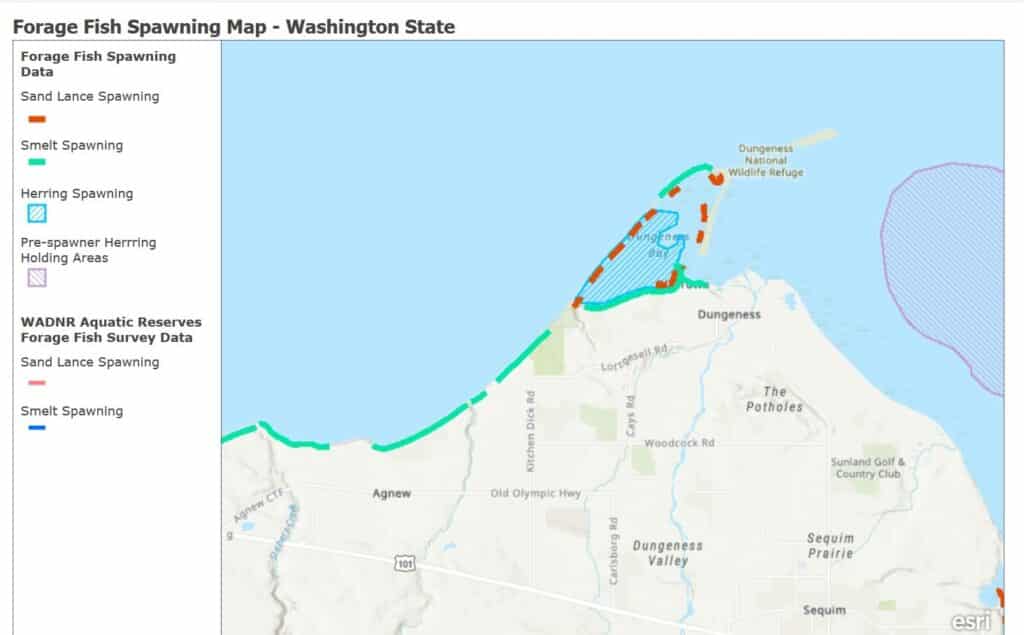
Coastal Watershed Institute and Earth Economics conducted an ecosystem services valuation of the economic benefit of feeder bluff shorelines in Clallam County. In this work, the natural process delivery of sediment to the beach by naturally eroding feeder bluffs was valued at ~$500,000 per year (Flores et al 2013).
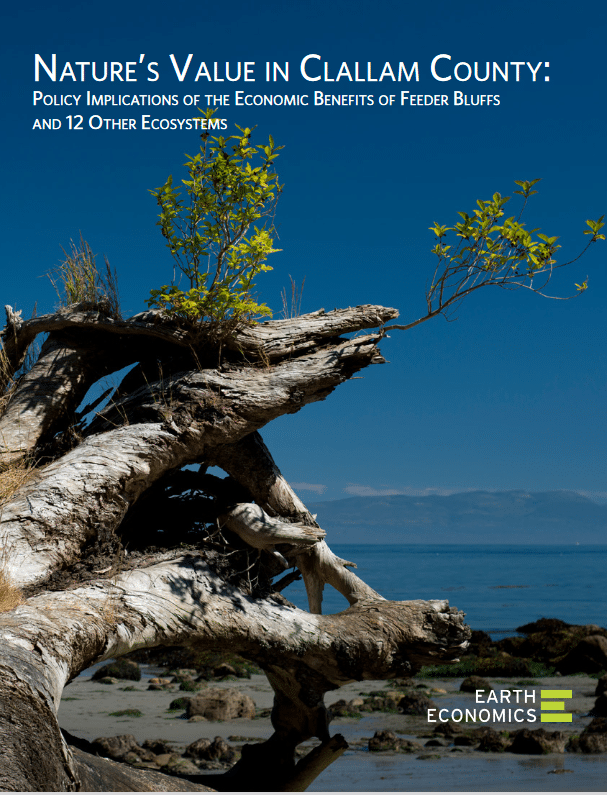
The result of this natural erosion is the formation and maintenance of the natural processes that sustain the Dungeness Spit. In the past 40 years, many feeder bluff properties have been developed for home sites to realize the commanding views. The combination of development and erosion means that an increasing amount of feeder bluff properties are, or will be, undermined by natural erosion. CWI has been working for decades with feeder bluff landowners in Clallam County to promote conservation management. CWI and partners have developed The Dungeness Feeder Bluff Conservation project, an innovative set of conservation strategies to protect the functions of the bluff and shoreline that create and sustain the Dungeness Spit. This project is identified in the Puget Sound Action Agenda as an action required to protect and restore Puget Sound, but has not yet been funded. However, the erosion continues…
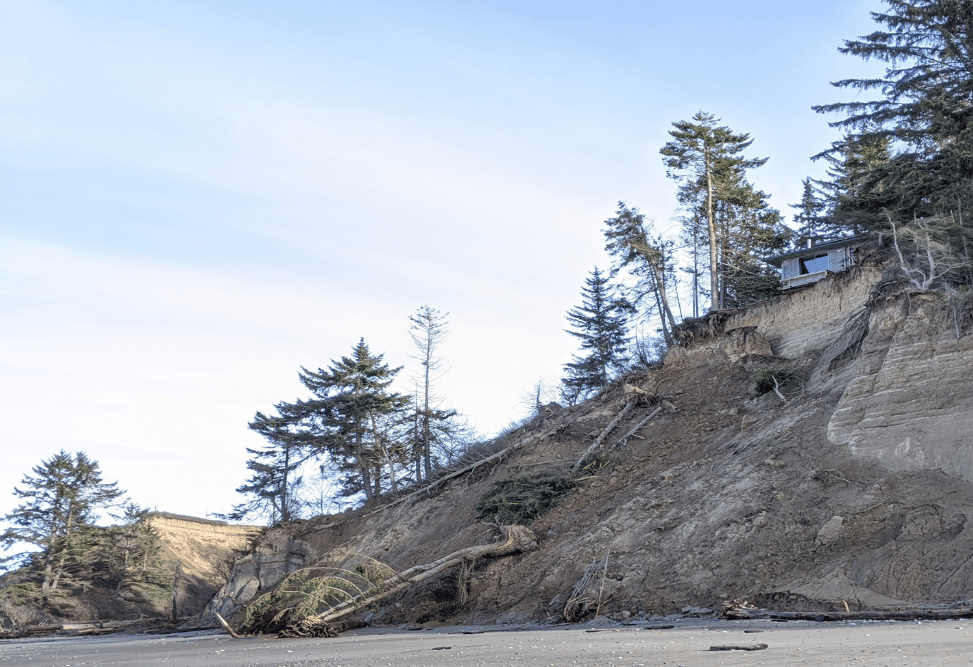
For example, if you walked along the beaches west of the Dungeness Spit over the last several years, you may have noticed several large natural landslides and homes and development infrastructure hanging precariously over the bluff edge. In 2017, one such property owner reached out to CWI for help with this very problem. CWI went to work attempting to secure grant funds that could have removed this at-risk structure to prevent it from falling on the beach ~115 feet below. CWI was not successful at securing grant funds, however erosion continued and the house loomed over a forage fish spawning beach along the Strait of Juan de Fuca.
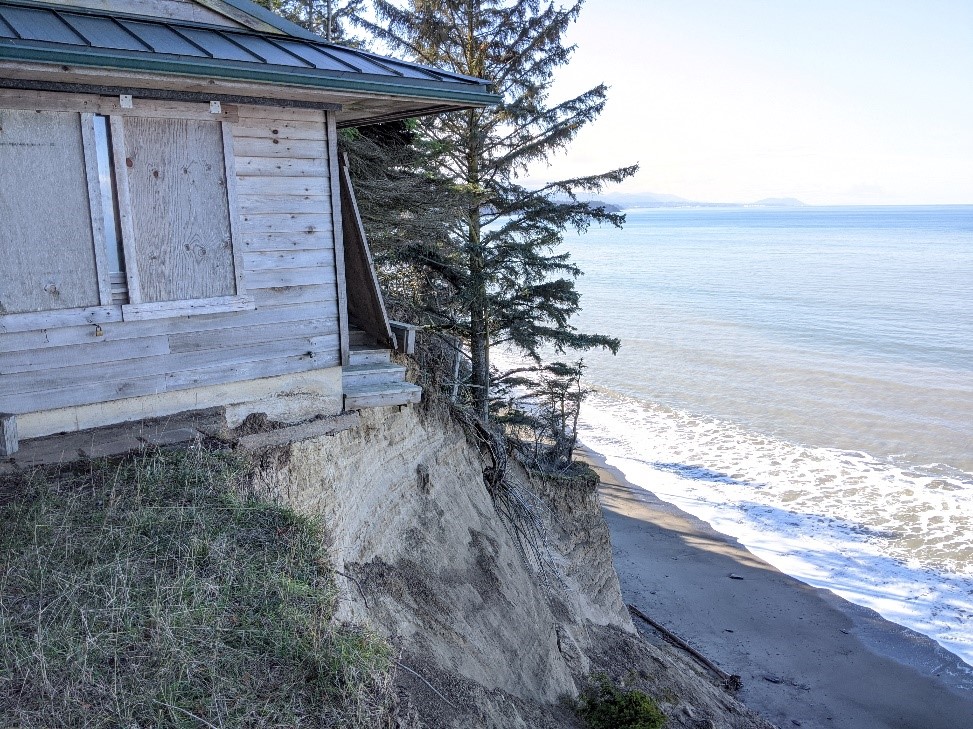
Coastal Watershed Institute’s mission is to “protect and restore marine and terrestrial ecosystems through scientific research and local community, place based partnerships.” Even though we were not funded to work on this property, we felt an obligation to our community and the ecosystem to not stand by and watch a home fall into the Salish Sea. CWI partnered with the property owner to prevent this home from falling onto the beach below. CWI donated time and expertise in project management and coordinated the necessary permits to remove this structure. The property owner paid for the removal of the home out of their own pocket.

Removal of the home was completed by 2 Grade Excavation and Development of Port Angeles in November of 2020.

The entirety of the at risk home was removed, with as many materials as possible repurposed and recycled. The building footprint was mulched and sown with native seeds to slow surface erosion.

Now, if you walk the beach below the former home site, there is no evidence of the overhanging home on the bluff or the beach.
A heartfelt thank you to the neighbors and the estate of L.D. Charf for their commitment to being a proactive steward of the Salish Sea. This home was at least the 4th to have been removed from a Clallam County feeder bluff and will not be the last.
If you are a property owner along an eroding feeder bluff, please review our blog http://www.coastalwatershedinstitute.org/blog/?p=169 and contact CWI for details on how to steward your property to protect a critical component of the remarkable place we all cherish. CWI continues to advocate for the preservation of the ecological function of natural shorelines in Clallam County and is devoted to being a community resource in the management of this complex landscape.
Literature Cited
Flores, L., Harrison-Cox, J., Wilson, S., Batker, D. 2013. Nature’s Value in Clallam County: The Economic Benefits of Feeder Bluffs and 12 Other Ecosystems. Earth Economics: Tacoma, Washington. http://www.coastalwatershedinstitute.org/earthEconomics.pdf
Parks, D. 2015. Bluff Recession in the Elwha and Dungeness Littoral Cells, Washington, USA Environmental and Engineering Geoscience (2015) 21 (2): 129–146.
https://www.researchgate.net/publication/277956367_Bluff_Recession_in_the_Elwha_and_Dungeness_Littoral_Cells_Washington_USA
Puget Sound Partnership. 2018. Action Agenda for Puget Sound. https://pspwa.app.box.com/s/osxaeqg19fevxu5n3k8xnjytzkwol512
Photo Credit
All photos by Jamie Michel of Coastal Watershed Institute


























































